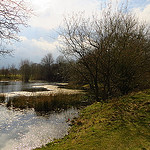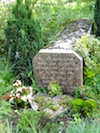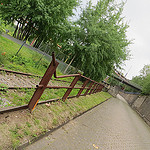Greek heritage is big in eastern Sicily. Most places in this part of the world were established by Greek settlers, after all, and have the ruins to prove it. But even in this distinguished company of heritage sites, Siracusa is in a class of its own.

For one, there is the hardware: Siracusa’s Temple of Apollo is easily eastern Sicily’s best preserved Greek monument. More importantly, however, there is the town’s history.
Walk On The Wild Side in Siracusa
Sicily was never antiquity’s equivalent to Fort Laramie where the Hellenic World defended its frontiers against grim-faced barbarians of Europe’s wild and uncivilized west.
It helps to look at the map of the eastern Mediterranean through the eyes of the ancient Greeks for a moment: there is mainland Greece, and then there is a smattering of islands scattered around it. Sicily is not much further away from the mainland than Crete, and certainly nearer than Cyprus.
Sicily was also fertile and wealthy enough to provide room for the development of a truly great metropolis. This role, for a number of reasons, fell to Siracusa, and for a while this Greek settlement on the southeastern coast of the island counted roughly 250,000 inhabitants, making it the largest Greek town in the world bar none (yes, larger even than Athens).
It was culturally relevant, too (you can make a case for Archimedes, the city’s most famous son, as the first man to develop a maths-based model of reality.
In other words, the world’s first “proper” scientist, and capable of defending itself, as the Athenians were to find out during their ill-fated Sicilian Expedition of 415 BC, one of the major turning points in the history of the Republic and the beginning of the end for its role as “top dog” in the ancient world.
After all of this, modern Siracuse comes as a surprise. It is not that so little of antiquity remains in the building fabric: you would not expect otherwise.
But Siracusa was continuously important throughout the Middle Ages, too (as one of the major strongholds of the Byzantine Empire), and not much is left from that period either. Instead, modern Siracusa feels airy, shiny and bright.

One reason for that is that Greek and Byzantine heritage may be big in Sicily but so are earthquakes. The tremor of 1693 proved particularly devastating, and in its wake, Siracusa – just like Catania and many other provincial towns in this part of Sicily – was reborn as a baroque city, with ornamental buildings grouped around wide open piazzas …

… although some of the residential streets have preserved their medieval patterns.

WWII proved equally devastating, but almost exclusively for the town’s northern (and more industrial) half. Most visitors only get a glimpse of this side of Siracusa when they are stepping off the train, immediately directing their steps towards the southern island of Ortigia which is where the Centro Storico is located.
But instead of heading directly for Piazza Duomo and the neighbouring attractions of downtown Siracusa, we suggest to take a short walk around the island first. Take a walk on the wild side in Siracusa!
You will, admittedly, not encounter a lot of greenery on your way. At the southern end of the New Town, just before crossing over into Ortigia, there is a marina with a well-tended promenade …

… and a tropical garden at the end.

That, as far as green spaces go, is pretty much it. Once you have crossed the bridge that leads into the old town …

… nature in Siracusa is not so much green in colour but blue.
This, however, is something we all too easily forget: the sea is the purest space of nature any of us will see on a regular basis, albeit it may offer nature of a different kind. Seen like that, at any rate, any seaside promenade is a Walk On The Wild Side.

This walk around the island will not take you more than an hour. Ortigia, after all, is picturesque but small: a finely sketched miniature.

Do not miss the Fountain of Arethusa where, according to legend, the nymph Arethusa emerged from the underworld. One a more factual level, it is also one of only two places in Europe where papyrus grows naturally. (The other spot is a river valley to the north of Catania.)

It would be difficult to miss the huge fortress at the southern tip of the island. The castle as you see it today is largely from the 13th century but was built over an even older castle, erected by the Byzantine Empire in 1038.
Also spare a thought: if you were to jump into the water and head south from here, the next piece of land in your way would be Africa. (You would have to swim for 500 km, however.)

After your circuit around Ortigia, you will still have plenty of time to take a closer look at the central piazza and the Cathedral.
At first glance, this Duomo may look straightforwardly baroque, but inside, you will find many traces of older periods with mosaics from the early Middle Ages and even pillars of the original Temple for the goddess Athena on whose foundations the church was built.

Much of modern-day Siracusa may indeed look shiny and bright, but once you study your environment closely, you will find that everything around here has a past – generally with another, even older past underneath.
For Siracusa, more than for most other places on Earth, it is true what Ralph Waldo Emerson wrote: Every end has been a beginning, there has always been another dawn risen on mid-noon, and under every deep a lower deep opens.







